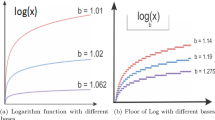Abstract
The extraction of six standard planes in 3D cardiac ultrasound plays an important role in clinical examination to analyze cardiac function. This paper proposes a guideline-based machine learning method for efficient and accurate standard plane extraction. A cardiac ultrasound guideline determines appropriate operation steps for clinical examinations. The idea of guideline-based machine learning is incorporating machine learning approaches into each stage of the guideline. First, Hough forest with hierarchical search is applied for 3D feature point detection. Second, initial planes are determined using anatomical regularities according to the guideline. Finally, a regression forest integrated with constraints of plane regularities is applied for refining each plane. The proposed method was evaluated on a 3D cardiac ultrasound dataset. Compared with other plane extraction methods, it demonstrated an improved accuracy with a significantly faster running time of 0.8 s per volume.
Access this chapter
Tax calculation will be finalised at checkout
Purchases are for personal use only
Similar content being viewed by others
References
Lang, R.M., Badano, L.P., et al.: Recommendations for cardiac chamber quantification by echocardiography in adults: an update from the American Society of Echocardiography and the European Association of Cardiovascular Imaging. J. Am. Soc. Echocardiogr. 28(1), 1–39 (2015)
Lu, X., Georgescu, B., et al.: Automated detection of planes from three-dimensional echocardiographic data. U.S. Patent No. 8,073,215. 6, December 2011
Zheng, Y., Barbu, A., et al.: Fast automatic heart chamber segmentation from 3D CT data using marginal space learning and steerable features. In: International Conference on Computer Vision (ICCV) (2007)
Chykeyuk, K., Yaqub, M., Alison Noble, J.: Class-specific regression random forest for accurate extraction of standard planes from 3D echocardiography. In: Menze, B., Langs, G., Montillo, A., Kelm, M., Müller, H., Tu, Z. (eds.) MCV 2013. LNCS, vol. 8331, pp. 53–62. Springer, Cham (2014). doi:10.1007/978-3-319-05530-5_6
Criminisi, A., Shotton, J., Robertson, D., Konukoglu, E.: Regression forests for efficient anatomy detection and localization in CT studies. In: Menze, B., Langs, G., Tu, Z., Criminisi, A. (eds.) MCV 2010. LNCS, vol. 6533, pp. 106–117. Springer, Heidelberg (2011). doi:10.1007/978-3-642-18421-5_11
Gall J, Lempitsky V.: Class-specific Hough forests for object detection. In: Decision forests for Computer Vision and Medical Image Analysis, pp. 143–157. Springer, London (2013)
Gall, J., Yao, A., Razavi, N., et al.: Hough forests for object detection, tracking, and action recognition. IEEE Trans. Pattern Anal. Mach. Intell. 33(11), 2188–2202 (2011)
Tobon-Gomez, C., De Craene, M., et al.: Benchmarking framework for myocardial tracking and deformation algorithms: An open access database. Med. Image Anal. 17(6), 632–648 (2013)
Author information
Authors and Affiliations
Corresponding author
Editor information
Editors and Affiliations
Rights and permissions
Copyright information
© 2017 Springer International Publishing AG
About this paper
Cite this paper
Zhu, P., Li, Z. (2017). Guideline-Based Machine Learning for Standard Plane Extraction in 3D Cardiac Ultrasound. In: Müller, H., et al. Medical Computer Vision and Bayesian and Graphical Models for Biomedical Imaging. BAMBI MCV 2016 2016. Lecture Notes in Computer Science(), vol 10081. Springer, Cham. https://doi.org/10.1007/978-3-319-61188-4_13
Download citation
DOI: https://doi.org/10.1007/978-3-319-61188-4_13
Published:
Publisher Name: Springer, Cham
Print ISBN: 978-3-319-61187-7
Online ISBN: 978-3-319-61188-4
eBook Packages: Computer ScienceComputer Science (R0)




